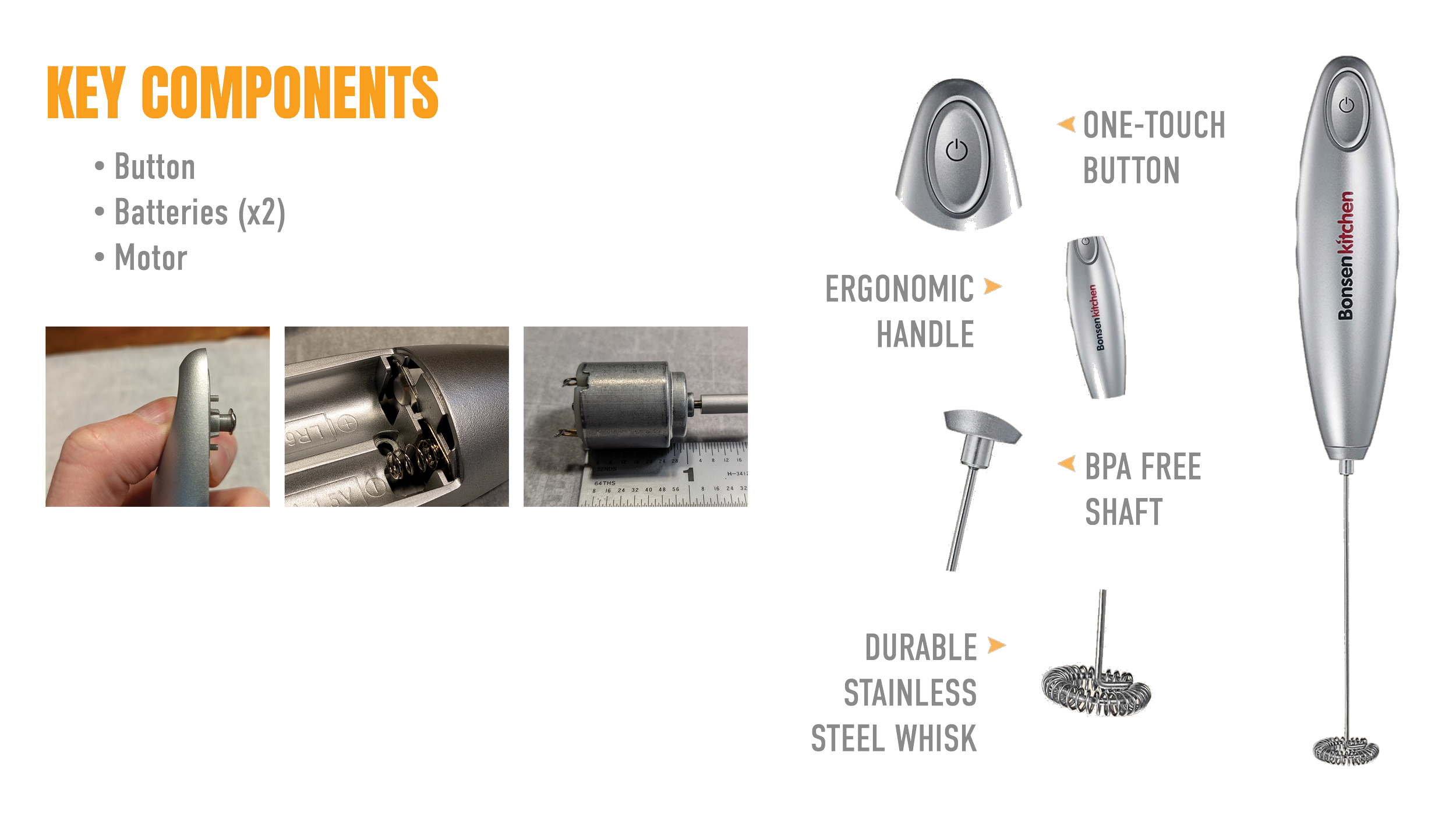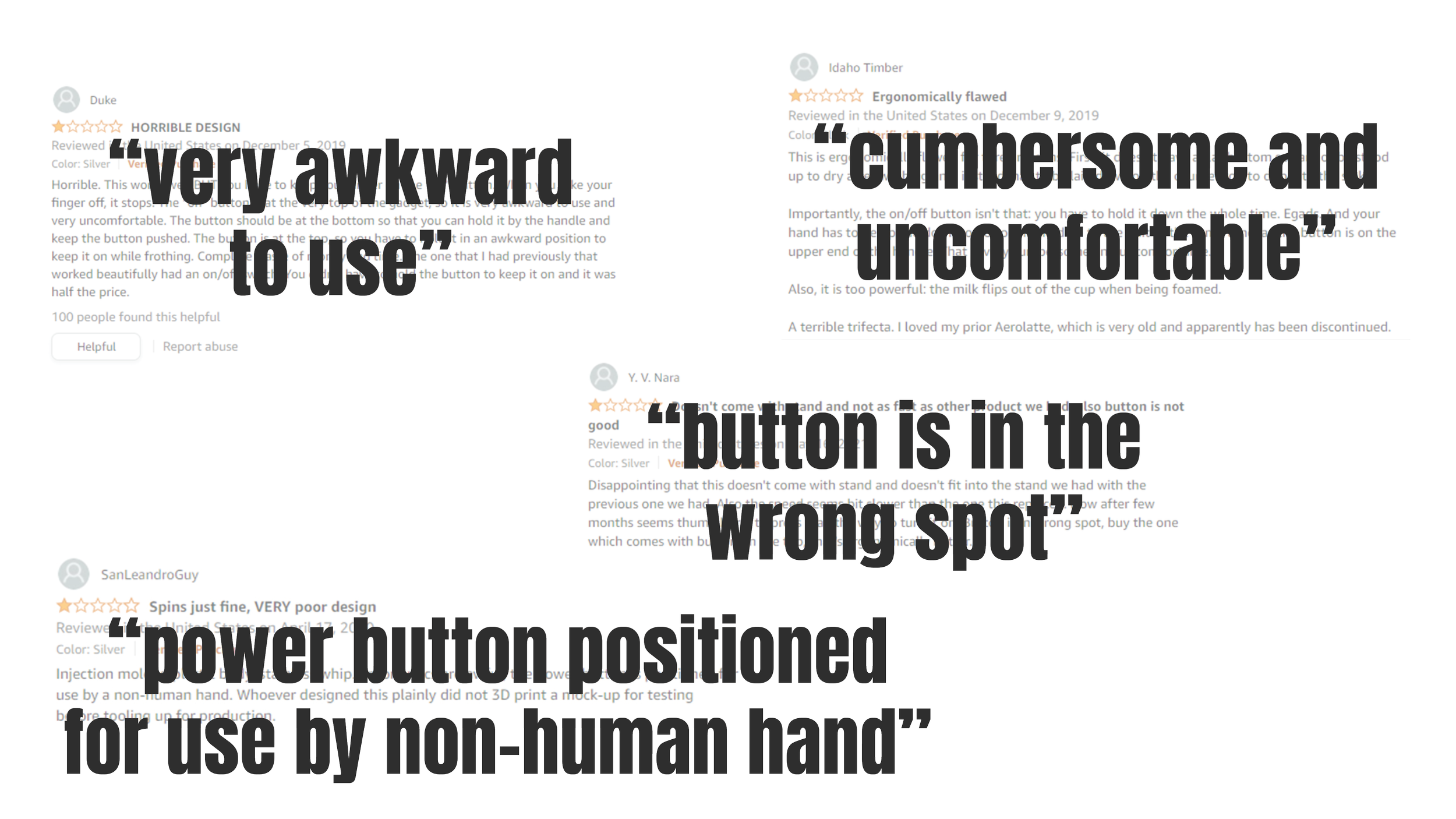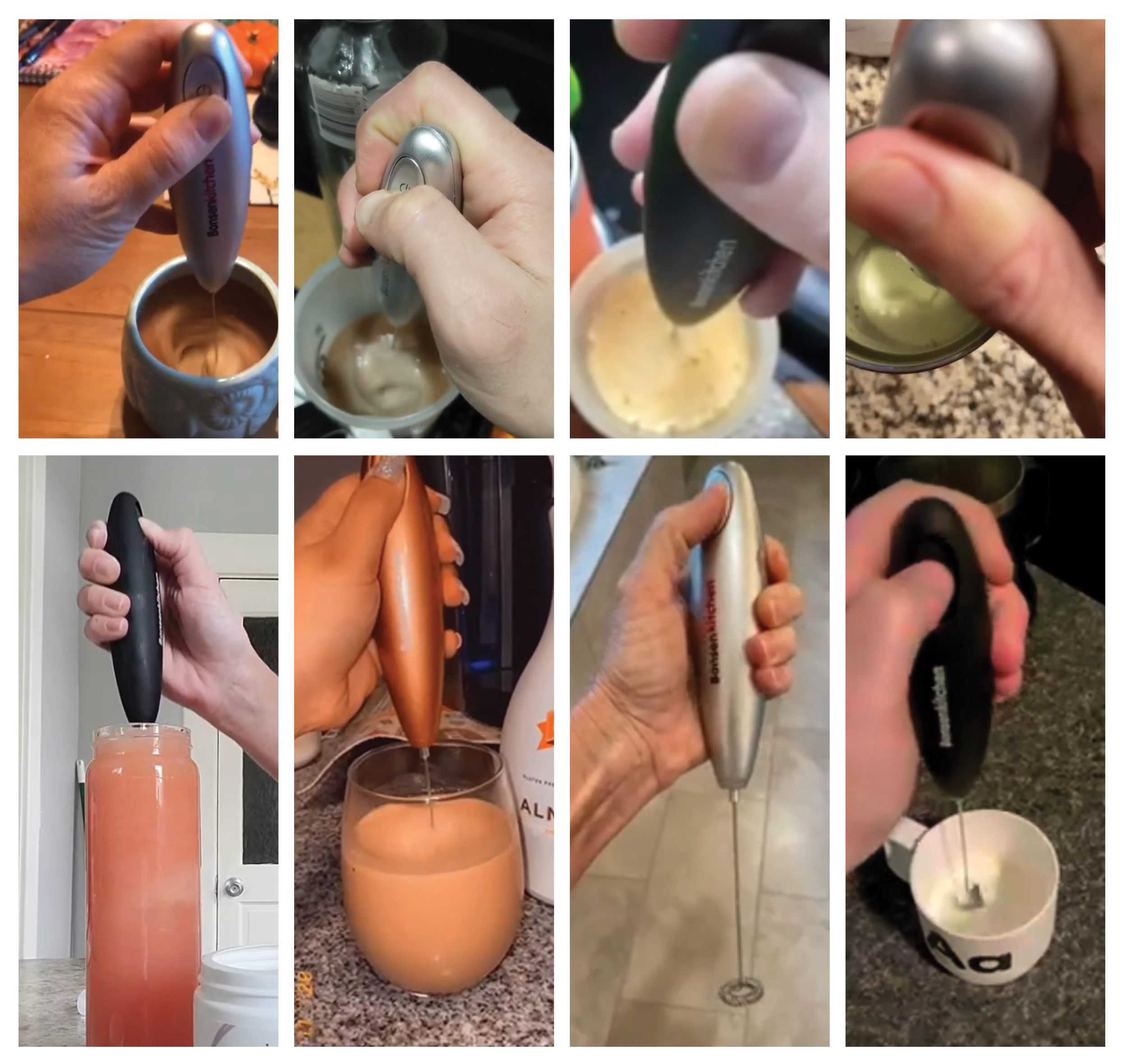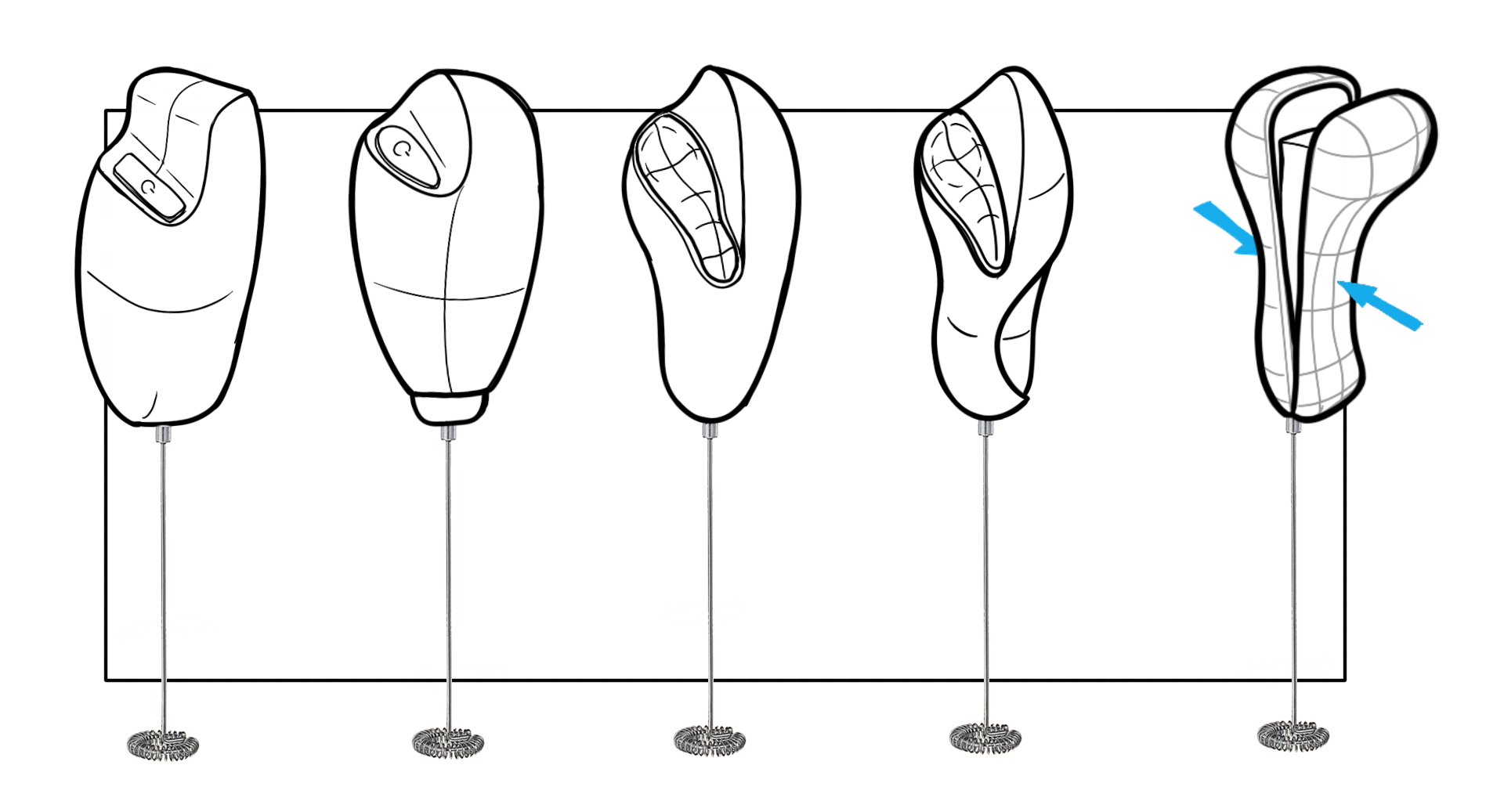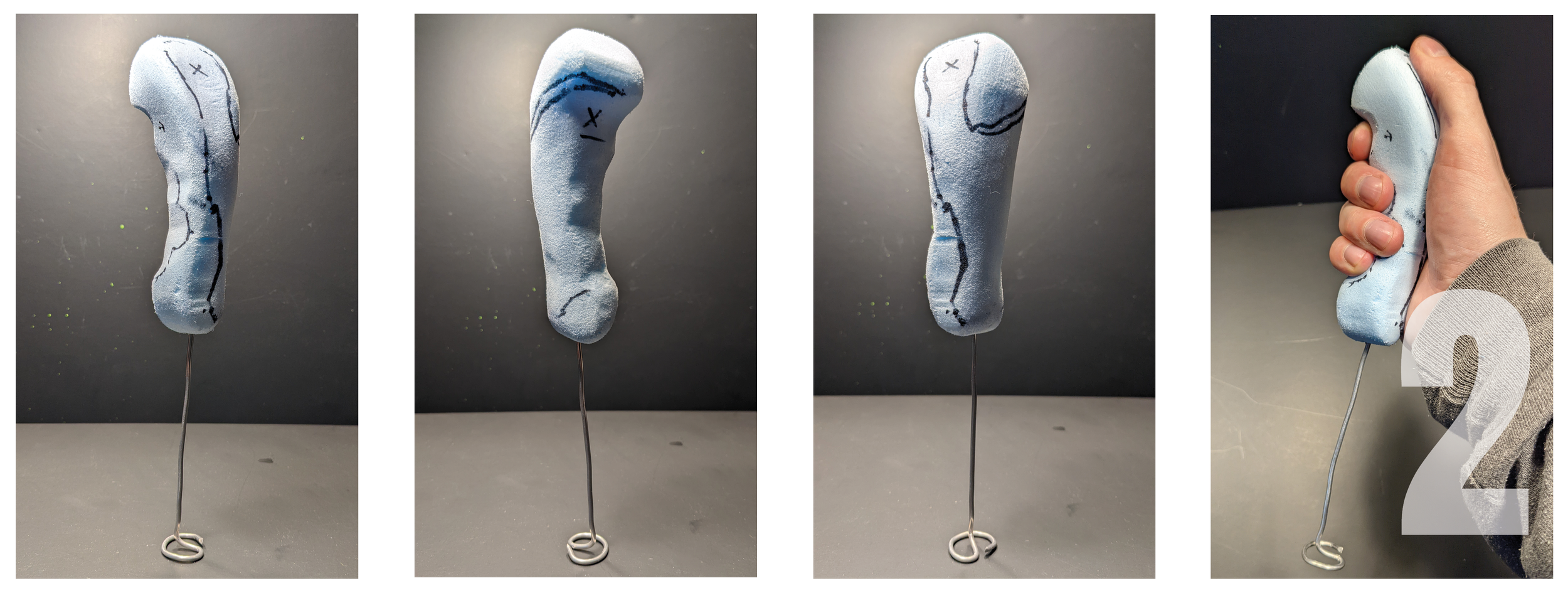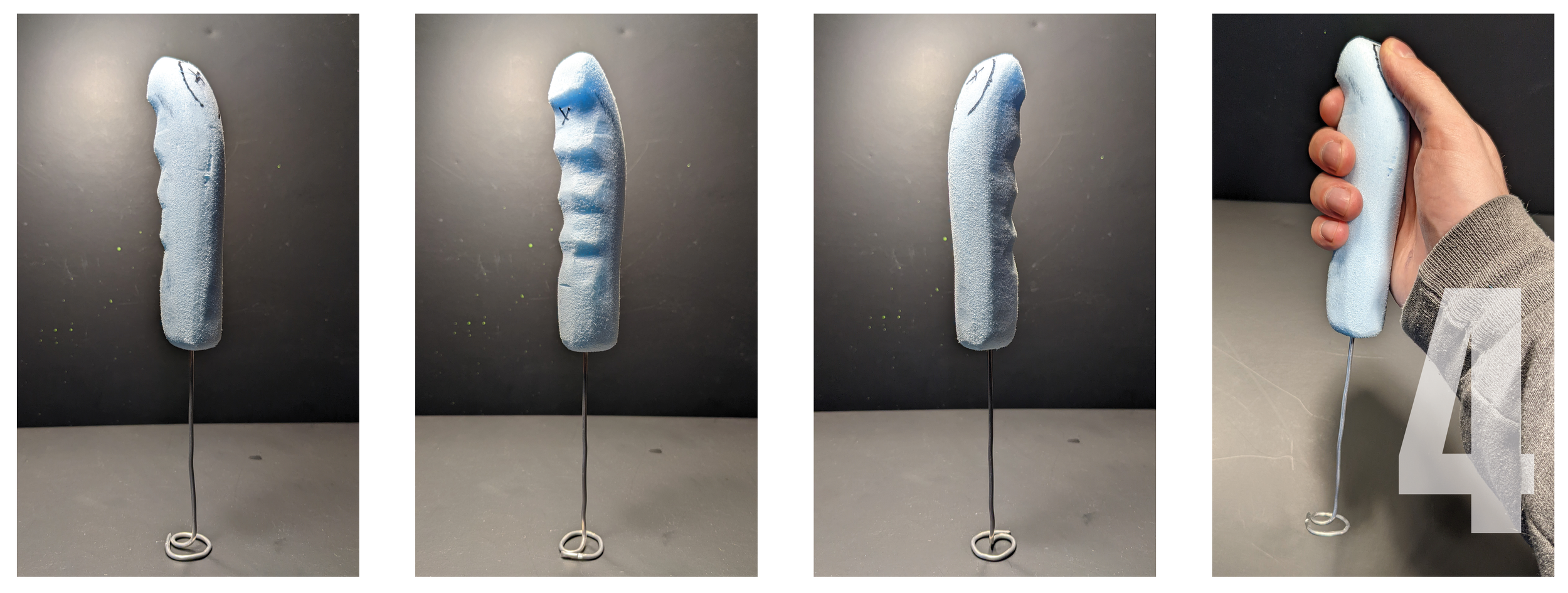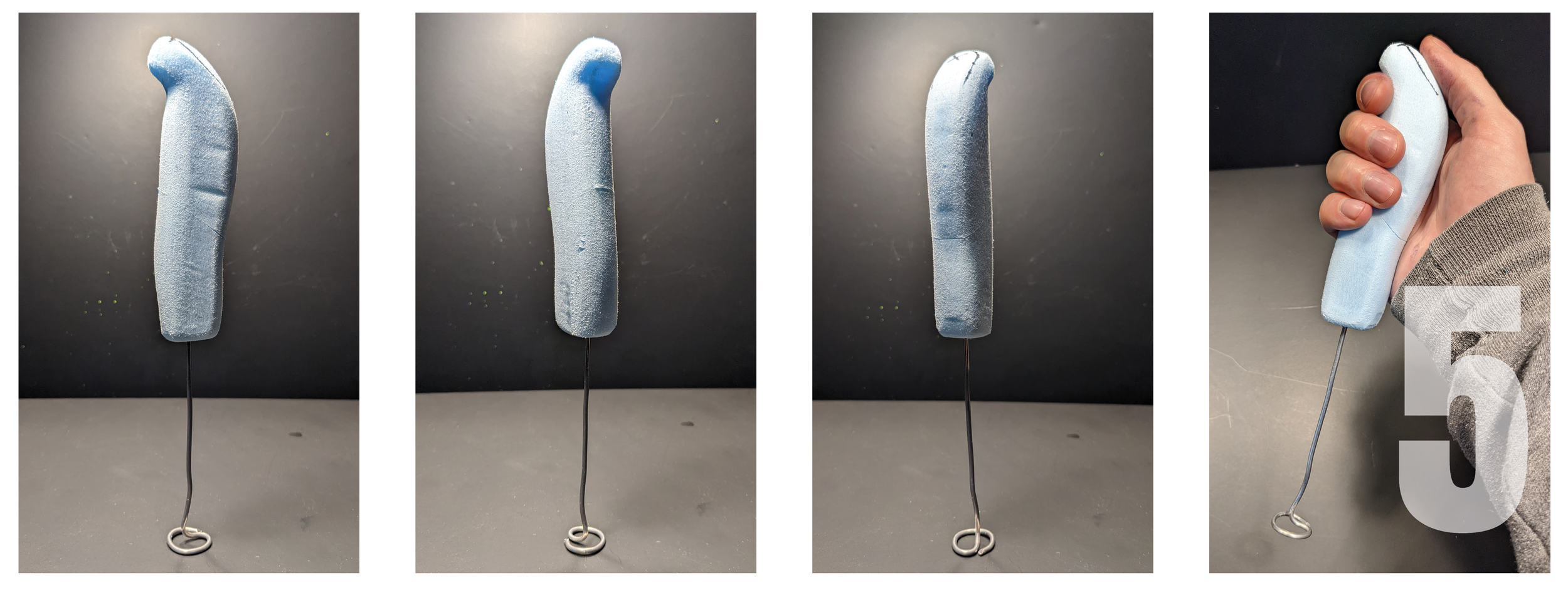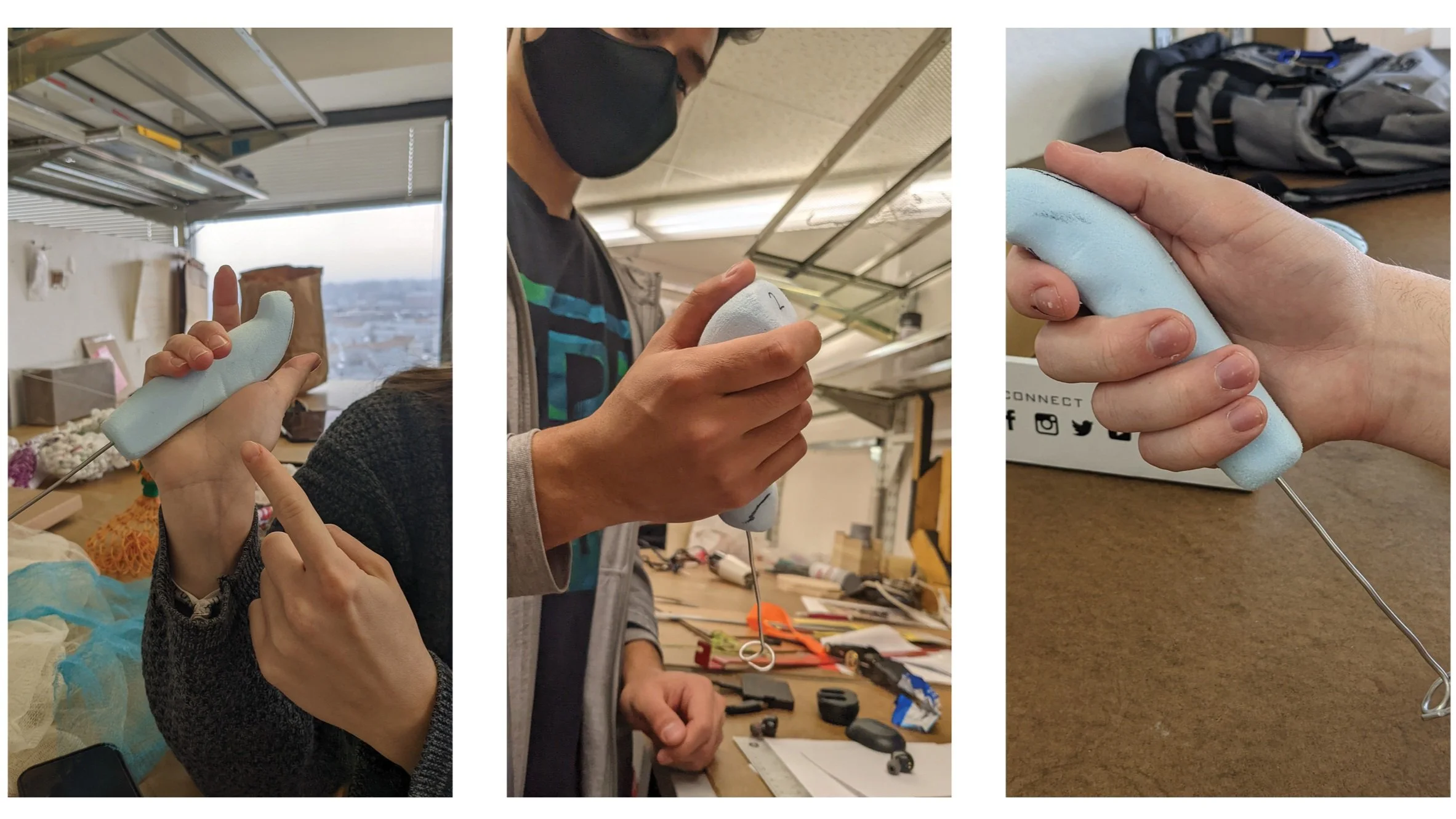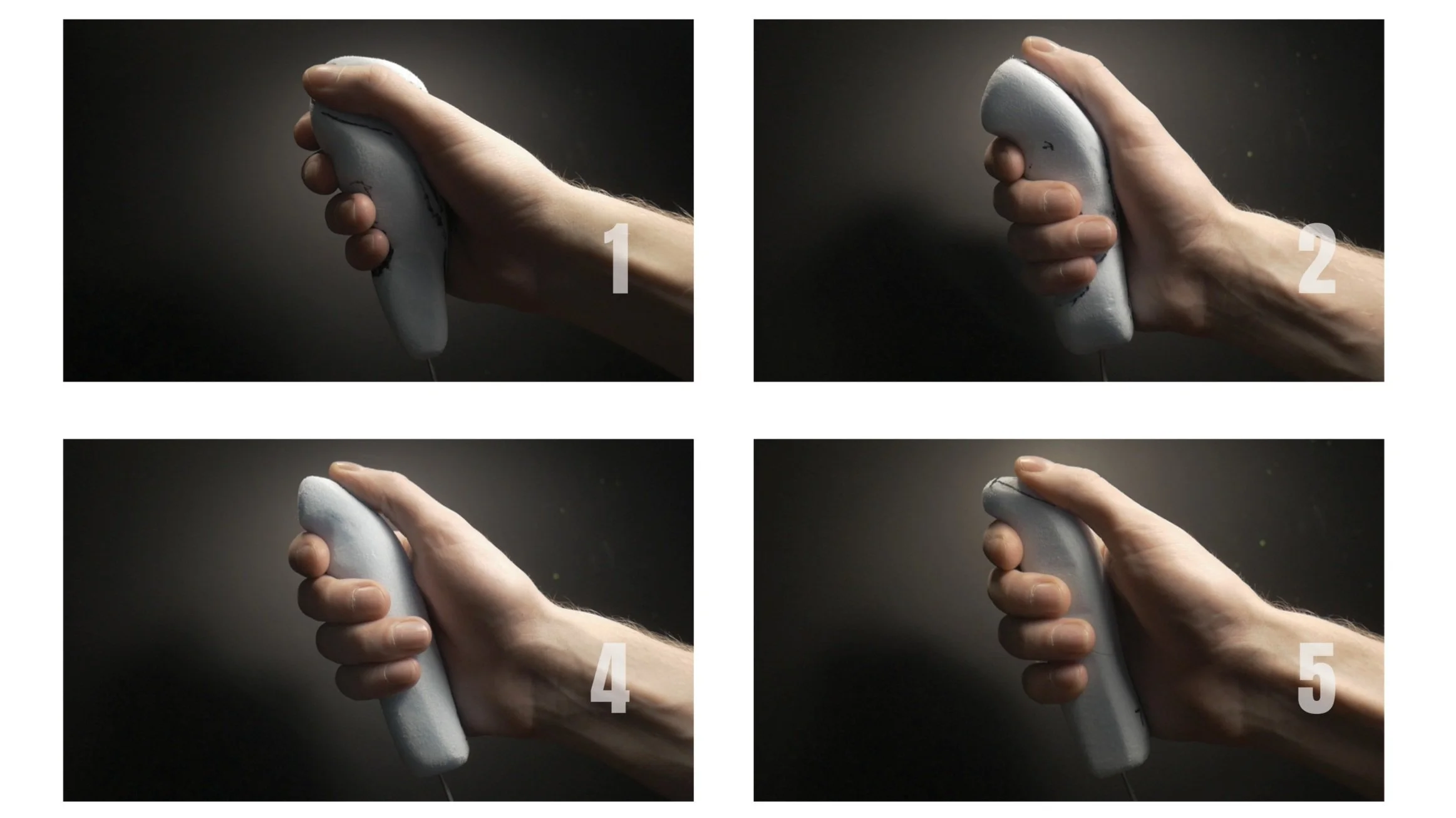Milk Frother
mILK fROTHER
HOW CAN WE IMPROVE THE DESIGN OF A MILK FROTHER WITHOUT CHANGING THE INTERNAL COMPONENTS?
THE CURRENT FROTHER
TASK ANALYSIS
OBSERVATIONS
AMAZON USERS
After trying the frother for myself, I looked into how Amazon users were using it and what they thought about the current design.
The two standouts were of course:
Awkward to hold
Button position is unnatural


